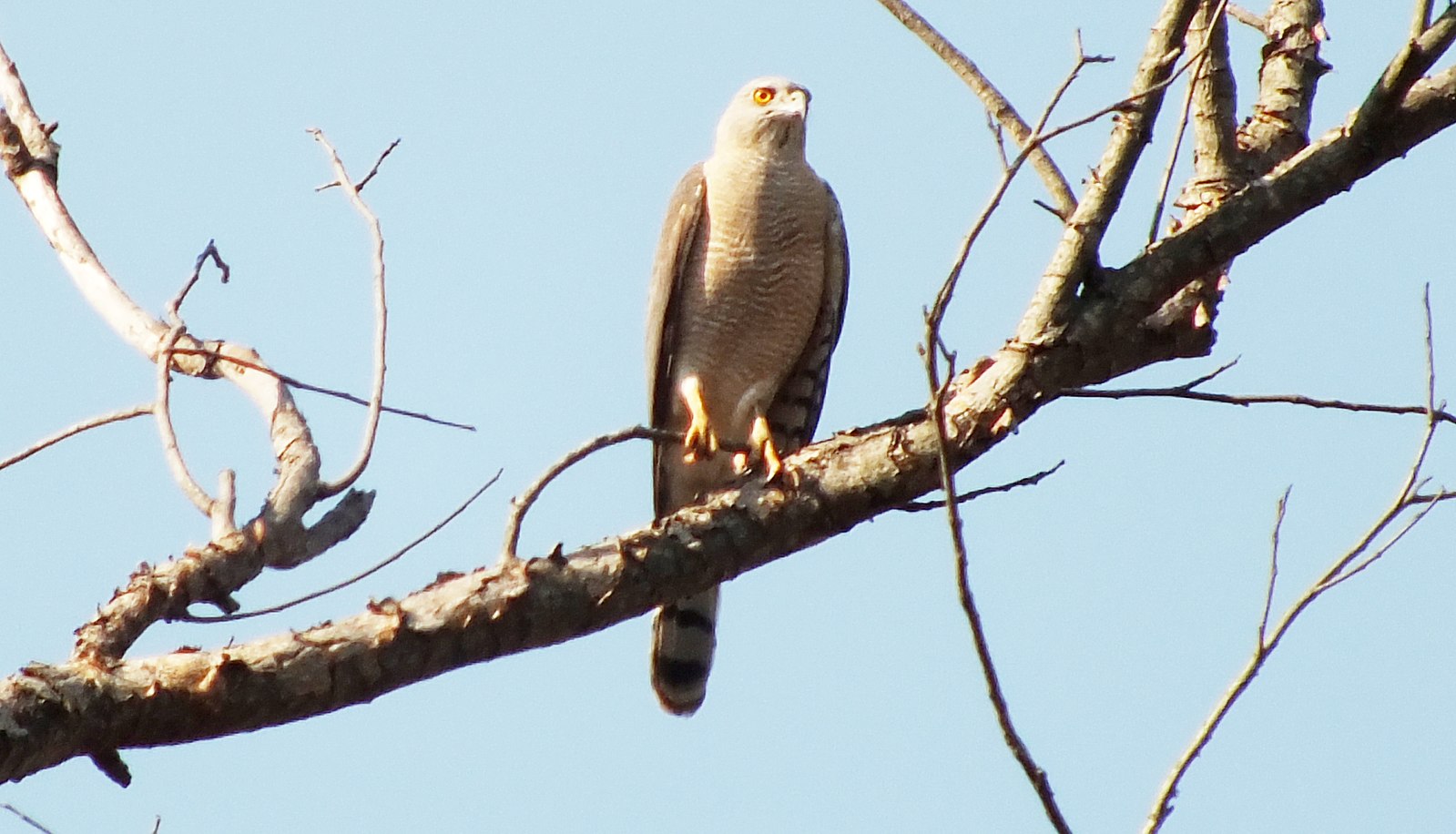Shikras are known for their exceptional intelligence and specialized hunting skills, making them highly efficient predators. These small but fierce raptors have a wide range across Asia and Africa, thriving in diverse habitats and employing strategic hunting techniques to capture a variety of prey.
Shikra’s Hunting Prowess
Shikras are masters of their craft, with each hunt meticulously planned based on the target species. They have a diverse diet, feeding on everything from lizards and frogs to large insects, termites, small birds, and mammals, including rodents. To successfully capture this wide range of prey, shikras employ a variety of hunting strategies:
- Ambush Hunting: Shikras often wait patiently on a concealed perch, ready to dive and snatch birds from the ground or foliage.
- Aerial Pursuit: These raptors are skilled at chasing and capturing birds in flight, using their agility and speed to outmaneuver their prey.
- Trunk and Foliage Hunting: Shikras are adept at snatching prey from tree trunks and dense vegetation, demonstrating their adaptability and hunting versatility.
Nest Building and Parental Care
 Image source: SHIKRA by Shiv’s fotografia
Image source: SHIKRA by Shiv’s fotografia
Shikras are known for their impressive nest-building skills, with both the male and female working together to construct a sturdy nest made of sticks, often placed in the high fork of a woodland or exotic tree. The female lays between 2 and 4 eggs, which must be incubated for approximately 3 weeks. As the eggs near hatching, the male becomes increasingly involved in keeping them warm and safe.
Once the young hatch, the male shikra takes on the responsibility of providing enough prey to feed his growing family. This cooperative parenting strategy ensures the successful rearing of the next generation of these intelligent raptors.
Adaptability and Resilience
Shikras have a high level of adaptability, thriving in a variety of habitats, including savanna, dry and moist woodlands, dense and degraded forest, riparian forests, exotic tree plantations, towns, gardens, and cultivated areas. This versatility allows them to exploit a wide range of resources and adapt to changing environmental conditions.
Despite facing threats such as habitat degradation, the use of insecticides, electrocution on power lines, and poisoning from eating poisoned rodents, shikras are currently classified as a species of Least Concern. Their resilience and ability to adapt to human-modified landscapes have contributed to their continued survival and success.
Unique Physical Characteristics
Shikras exhibit distinct physical features that contribute to their hunting prowess. Males are typically grey in the upper body and have a dull whitish color on the underside, while females are lightly colored and slightly bigger, with yellow-colored eyes. These subtle differences in appearance may play a role in their hunting strategies and social dynamics.
Conclusion
In conclusion, shikras are remarkably intelligent and adaptable birds of prey, with a wide range and diverse diet. Their specialized hunting techniques, cooperative parenting, and resilience in the face of environmental challenges make them a fascinating subject for animal enthusiasts and researchers alike. The shikra’s remarkable abilities and survival strategies are a testament to the wonders of the natural world.
References:
– Shikra: The Leopard of Birds
– Shikra


